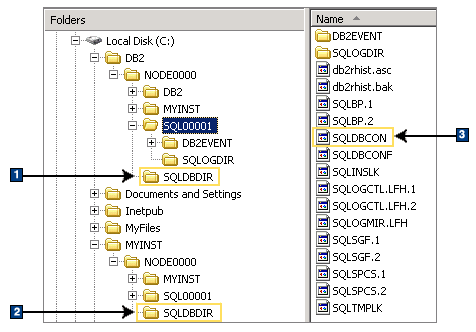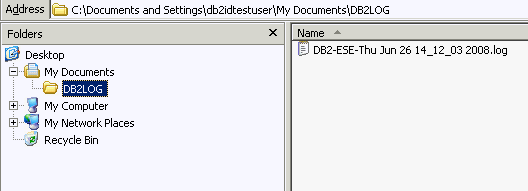When you install DB2® database products, you can specify a DB2 database product installation path or else use the default path. After installation, DB2 objects are created in these directories.
Follow these steps to verify the DB2 product you have installed on Windows®.
The DB2 product you have installed will be displayed.
The following table shows the location of DB2 objects after a default installation.
| DB2 Object | Location |
|---|---|
| DAS information |
|
| Database configuration file SQLDBCON | C:\DB2\NODE0000\SQL00001 |
| Database directory
Contains files needed for:
|
C:\DB2\NODE0000\SQL00001 |
| Database manager configuration file db2systm |
|
| DB2 commands | C:\Program Files\IBM\SQLLIB\BIN |
| DB2 error messages file db2diag log files |
|
| DB2 installation path | C:\Program Files\IBM\SQLLIB |
| Directory for event monitor data | C:\DB2\NODE0000\SQL00001\DB2EVENT |
| Directory for transaction log files | C:\DB2\NODE0000\SQL00001\SQLOGDIR |
| Installation log file |
|
| Instance |
|
| Instance information |
|
| Node directory |
|
| Local database directory for the instance called DB2 | C:\DB2\NODE0000\SQLDBDIR |
| Partitioned database environment file db2nodes.cfg |
|
| System database directory |
|
The following figures illustrate an example of the DB2 directory structure after installation on Windows XP or Windows 2003 operating systems using the default options. In these figures, there are two instances, DB2 and MYINST. The directories DB2 and MYINST under the local disk C: will only appear if a database has been created under the appropriate instance.
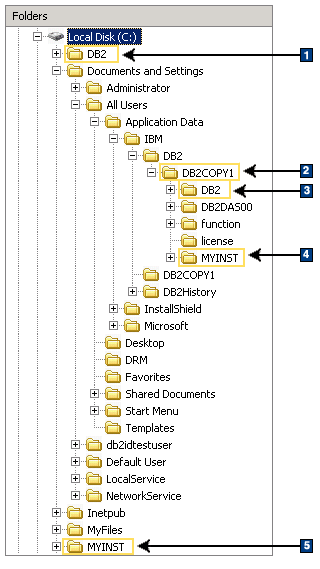
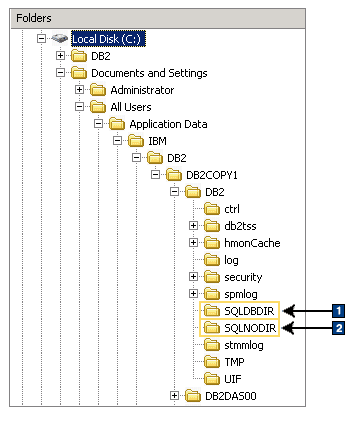 |
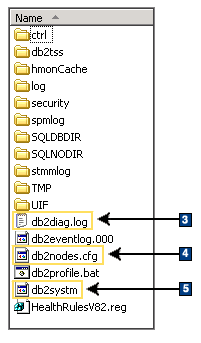 |
